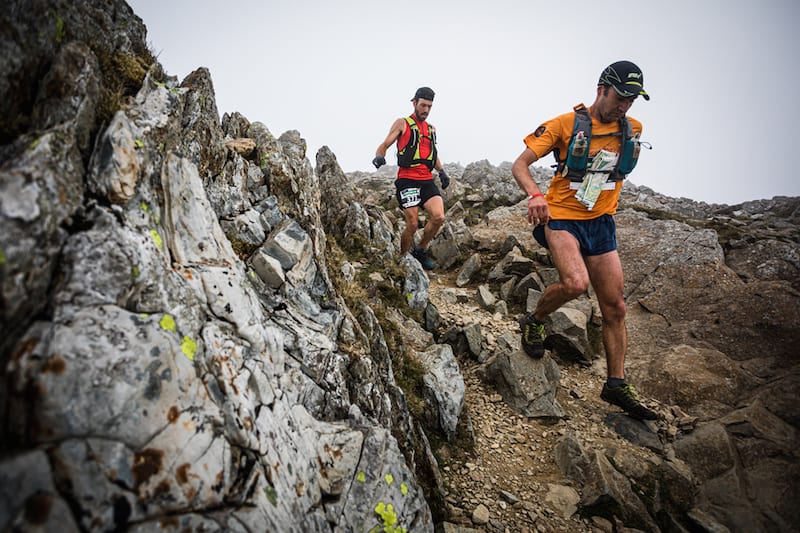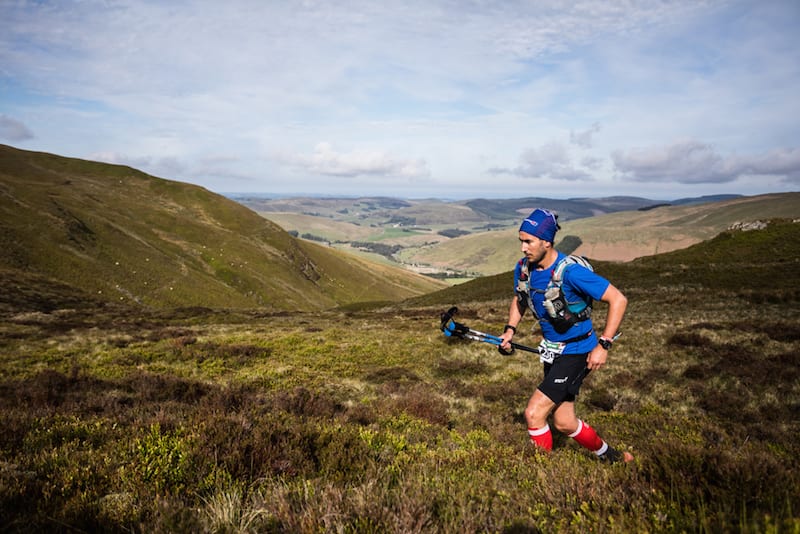For five days, I followed the 2019 Berghaus Dragon’s Back Race from Conwy, north Wales, to Llandeilo in south Wales. I was the blogger-journalist for the event and I spent my days talking to the runners, running/walking sections of the daily routes, driving and sleeping in my campervan and writing news articles for the website. I was part of an excellent media team, including photographers, filmmakers and a presenter.
I loved the experience, just like I enjoyed being the blogger for the sister event the Cape Wrath Ultra 2018. It was great to:
• Explore some remote areas of Wales and to visit places I had never been to before.
• Gather people’s stories and report from the whole of the field.
• Walk and run in a different landscape.
• Be part of a team of like-minded people.
• Travel and sleep in my campervan.
I also learned a lot about what it takes to organise a multi-day stage race and the people who enter these events. Here are a few of the things I discovered.





19 things I learned about the Berghaus Dragon’s back Race
1 Wales is like Scotland but different. This might seem like an odd discovery but I have rarely visited Wales and I had climbed only one mountain, Snowdon, many years ago, so I was not familiar with the landscape and terrain.
In places it seemed familiar, like Scotland, while in other locations it looked very different. I will be back to explore a bit more without chasing runners across the land!
2 There is no ultra runner “type”. The Berghaus Dragon’s Back Race attracted men and women of all ages. The youngest was 23 (male) and the oldest was 68 (male).
On the start line was a mix of experienced whippets of the ultra running world, newcomers to multi-day running and everything in between. The runners came from 32 countries.
I am always surprised by the range of people that take up multi-stage challenges and how difficult it is to determine who will, or won’t, finish.




3 Multi-stage races attract far more men than women. I was aware that entry lists are usually male heavy but I didn’t realise the number of women was so low.
In the 2019 Dragon’s Back Race, only 14% were female. This represents a small rise of 1% from the previous edition but I thought there would be far more women taking part.
I know many female ultra runners and I presumed the stage race field would have great numbers of women. I asked some of the female competitors to tell me what they perceive the obstacles to be.

4 This is a tough race. It’s billed as the world’s toughest five-day mountain running race. I have noted the qualifier (it’s the “five-day mountain running” bit…) but I can see why this article in The Guardian has given the title credence.
Over five days, runners must complete 315km (almost 200 miles) and climb 15,500m of ascent. That’s more than three times the height of Europe’s highest mountain, Mont Blanc.
Many people were surprised by the gnarly terrain, including numerous high, boulder-strewn mountains and ridges. In addition, the remote Welsh hills and moorlands appear to be far less walked and tracked than many areas that I know in Scotland.
Luckily, the weather was mostly excellent and visibility was good overall so navigation wasn’t too testing, but in other conditions I can see it being a route that would cause great confusion unless runners were excellent navigators
I think it’s fair to say this is a very touch running race.



5 Each edition seems to be getting a bit longer. The latest version included an average daily distance of 63km (almost 40 miles per day). The shortest day was the first, 52km, while the longest days were the third and fourth at 71km.
Although I have seen people doing multi-stage races before I still can’t understand how they get up day after day and run-walk such extraordinary distances.
6 I witnessed impressive mind over matter. Even when people were slowed to a hobble due to injuries – one man was even seen walking downhill backwards because his knees were so sore – they still found the will to keep going.
Repeatedly, I saw people in tears and agony, who then told me they would make it because they had the strength of determination to do so. I was impressed by the mental resolve of so many runners, although I was also shocked by what people will put themselves through just to finish a race.


7 It helps to smile. When I asked how people were feeling they would often say, with a smile: “I’m fine.” Yet when asked to elaborate they would describe all the many aches and pains in their body.
Then they would head off smiling determinedly again. It seems that smiling helps people to believe they are doing well, despite the physical difficulties.
8 Friends are quickly made in stage races. I have seen this at both the Cape Wrath Ultra and the Dragon’s Back Race. People find and make friends with like-minded people.
They support each other regardless of experience and ability and those that can aim to find someone to run with so as to make the miles go by quicker.
Lowri Morgan, who was fourth female in the Dragon’s Back Race, said: “It is amazing to be part of a race that includes such a range of different abilities and experiences.
“It is humbling to be able to run alongside some of the greats of multi-stage racing. I have made friends and I have been offered support and kind words by many people n this race.”
A group of three men, Mats Nord and Daniel Ljungdahl, of Sweden, and Emil Soderlund, of Finland, met at the race and ran together every day. They said: “It’s been great for motivation and we have made friendships for life.”
9 Dragon Mail makes a big difference. The runners do not have much contact with the outside world while running. If they can find phone reception they can make a call to loved ones but in many locations there was little or no phone reception.
Instead friends and family can contact the participant through a system of Dragon Mail. Each evening, they collected messages, which they enjoyed and treasured.
It felt a little like we had gone back in time, to a place where people relied on the post to receive letters, but I think it was both charming and warming to see how much these messages meant to runners.


10 The wonders of kinesiology tape are ever present. Many runners appeared to be held together by miles of colourful kinesiology tape.
There is a debate as to whether the effects of this tape is real or psychological but many runners hoped that it would keep them going through numerous types of pains, niggles and strains.
11 There is such as thing as blisters on blisters. I saw, with my own eyes, the wreckage of people’s feet, where blisters had indeed forward on top of blisters. It was both disgusting and breath-taking.
12 It’s all in the detail. From careful route planning and navigation to cut-off times to paying attention to blisters to injury niggles, hygiene, eating and hydration, there are so many small things that can make or break a race. The people who appeared to find the challenge easier spent a lot of time attending to the smallest of details.

13 The tiny pleasures matter. When the runners headed through a town or close to a shop many of them treated themselves to an ice cream or a can of coke. Their looks of pure joy from something seemingly so everyday were remarkable.
14 A race for some, an adventure for others. The Berghaus Dragon’s Back Race included runners who were keen to race, score PBs or win, while others simply wanted to enjoy the adventure.
The route is an impressive journey, especially on foot and through the rugged wild landscapes of Wales.
Read Galen and Lisa win 2019 Berghaus Dragon’s Back Race.

15 The dark horse can win. When Lisa Watson went into the race she had hoped to get through each day in under 14 hours. She was fairly confident she would finish but she had never run as far, in one go, as the 72km demanded on day 3 of the race.
She paced herself on days 1 and 2 and then began to push harder. By day 4 she was in the lead by a minute. At the end of the race she was more than 2 hours ahead of the female runner up Sabrina Verjee, a three-times finisher of the race.
It was an impressive win by a relatively unknown and inexperienced runner.




16 The race couldn’t happen without the volunteers. A team of around 120 volunteers and staff worked hard to support the runners through five tough days.
They built – and took down – an entire campsite village every day. The village included multiple eight-people tents for the runners and marquees for catering, eating, medics and media.
The volunteers also cooked and catered for runners, staff and other volunteers at almost any hour of the day. To top it all they did everything with a smile and a brilliant attitude.
There were other teams including medics, wranglers, planners and race control.
For anyone who thinks the entry fee is high you should see what goes on behind the scenes. I think it’s a fair entry cost. Read John Kynaston’s report, which among other things talks about the volunteers and the cost of the race.
17 Volunteers gain credits for races. Instead of payment, the volunteers can collect credits to enter Ourea Events. Find out about volunteering.

18 The bosses are great. I was employed by Shane Ohly, the race director and owner of Ourea Events, and also the marketing manager Tom Hecht, who are wonderful people to work for. They are professional, thoughtful, good-natured and very passionate about their races. I felt honoured to be part of the team.
19 Time flies when you are following a race. My five days following the race and reporting on it seemed to go by as if it was just a weekend. Being solely focused on one event and gathering so much information to turn into news articles for the Berghaus Dragon’s Back Race website felt all-consuming.
Emerging from the bubble of this race took a while and felt rather peculiar.

There are still places to take part in the Cape Wrath Ultra in May 2020. Keep an eye on Berghaus Dragon’s Back Race to find out when entries open for the next race in 2021.

